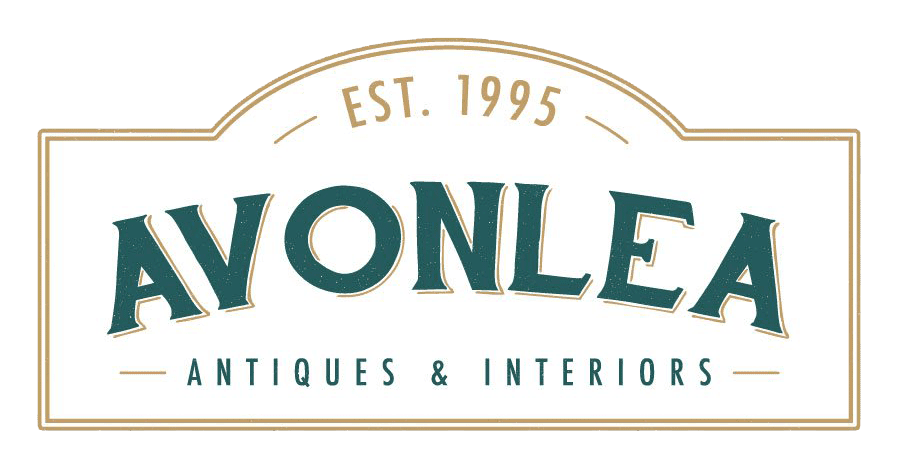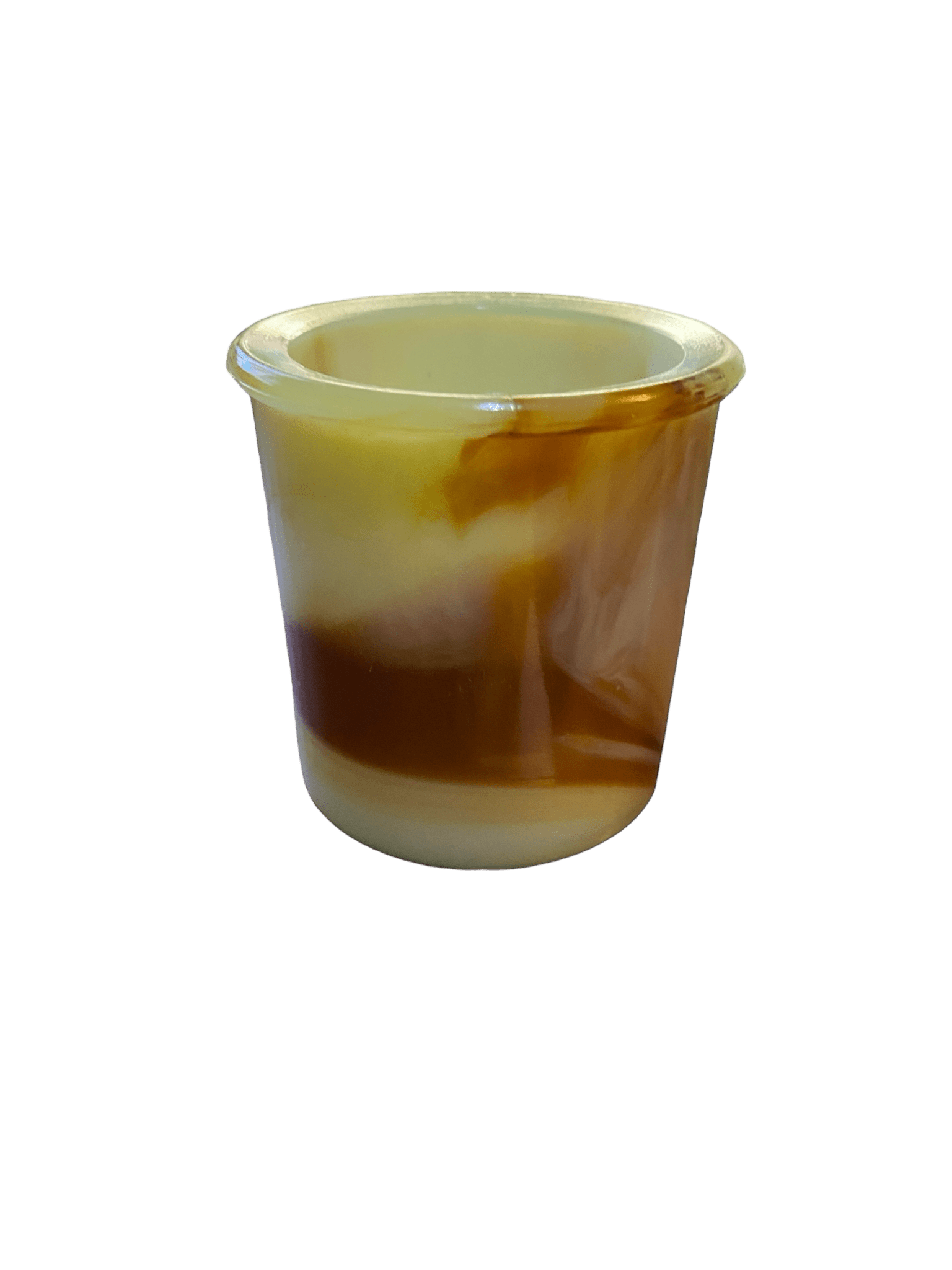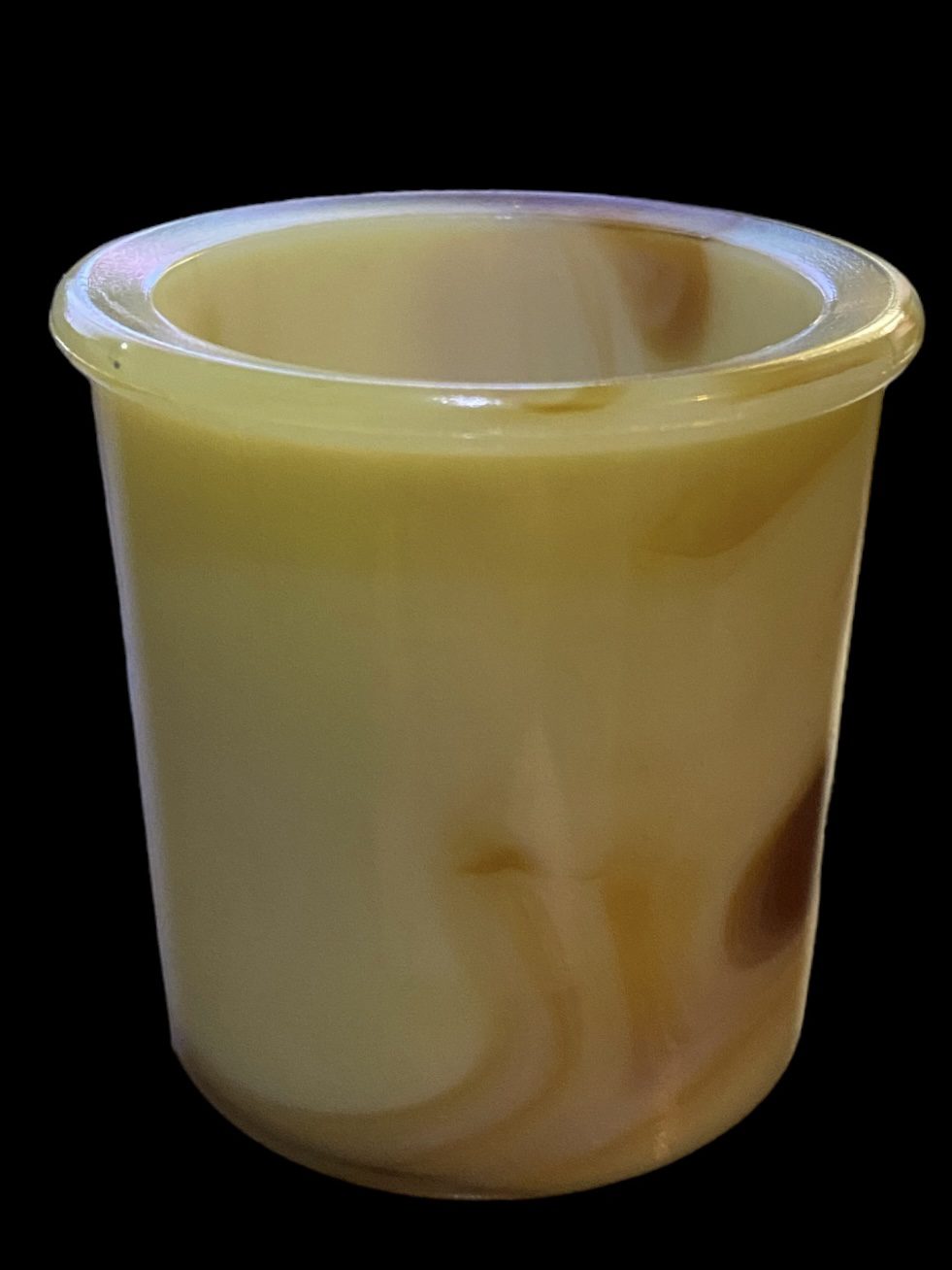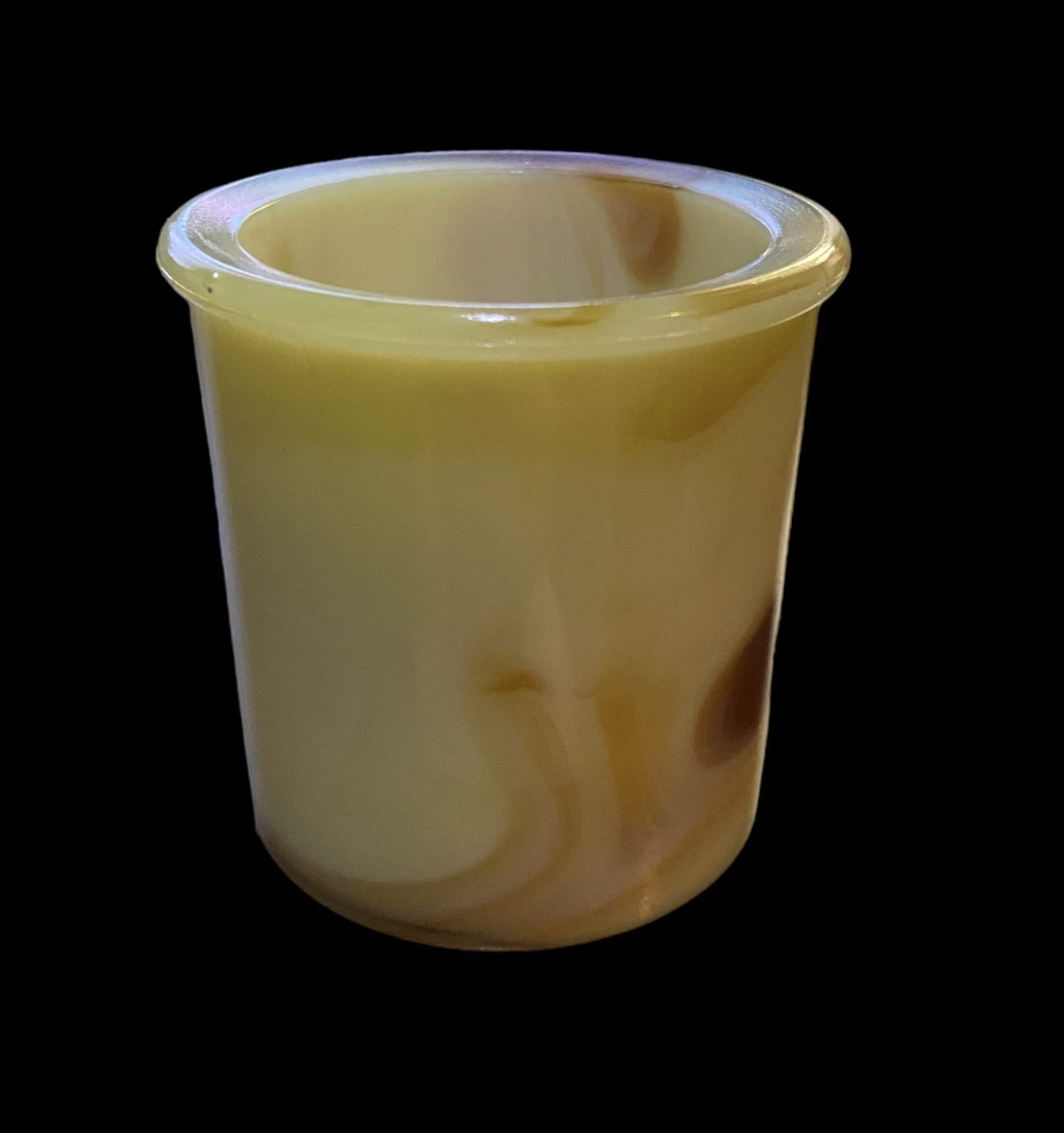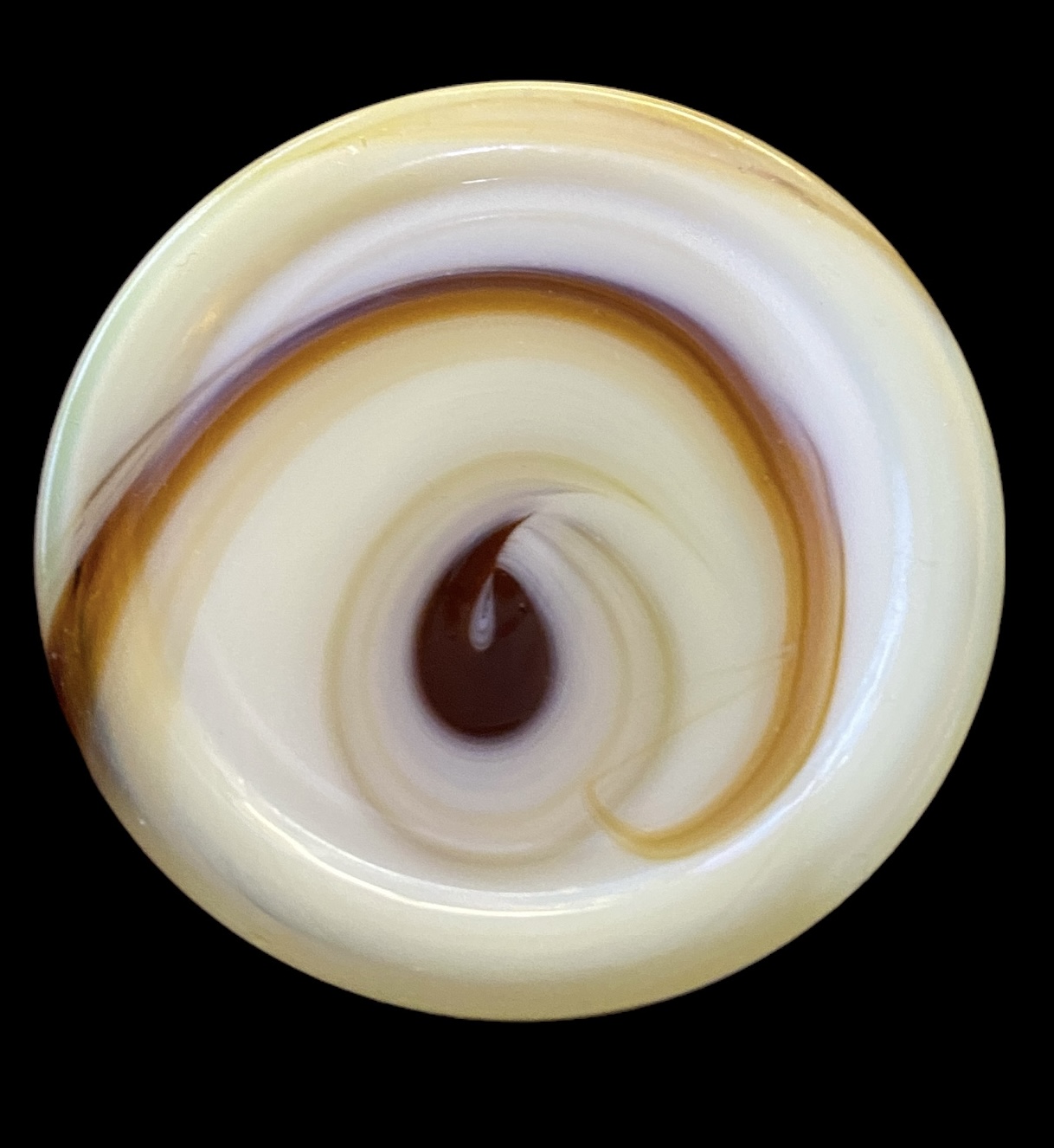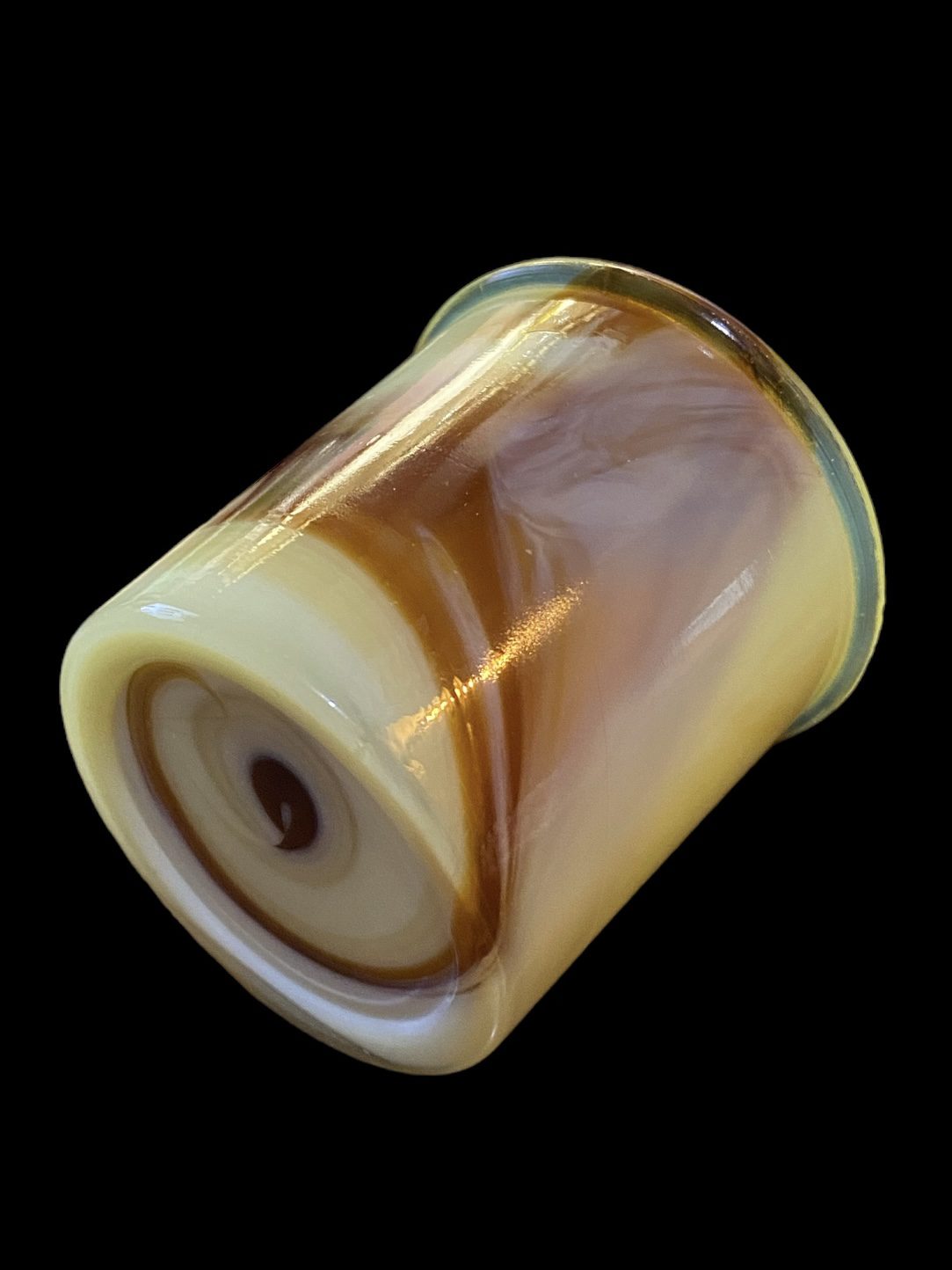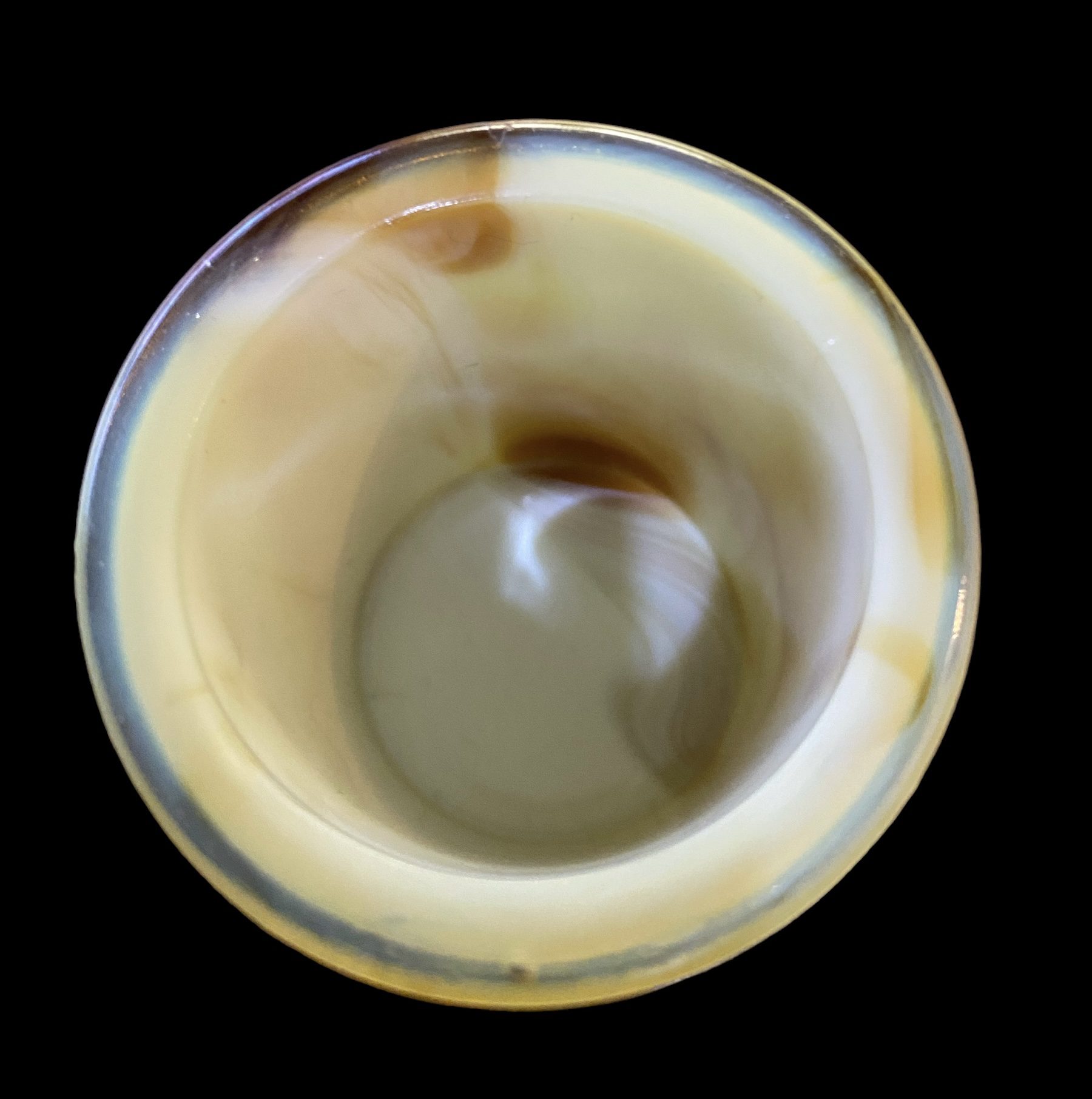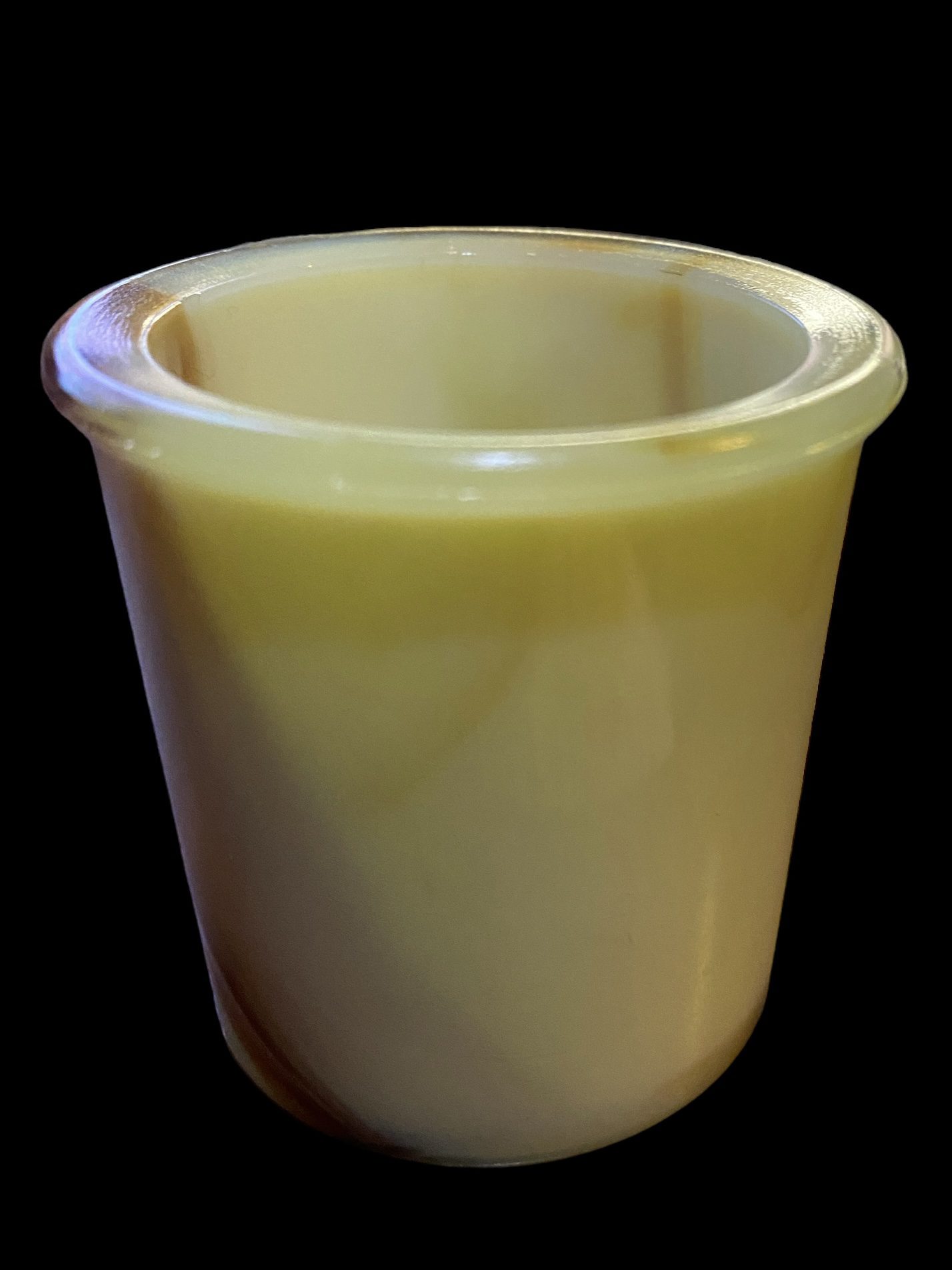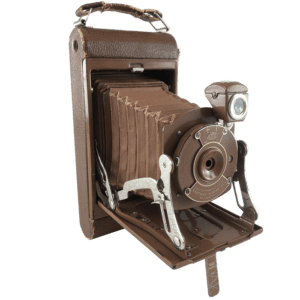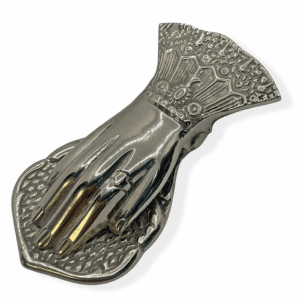EAPG Toothpick Holder: Akro Agate Glass
$25.00
EAPG antique toothpick holder of Akro agate glass. The veins of color are highlighted perfectly. The swirl to the base forming a perfect ‘eye’, is an attractive feature of the agate. Shows the influence of the Deco style. This antique toothpick holder would be a great addition to any collection.
Description
. EAPG stands for Early American Pattern Glass
. EAPG is a clear or colored pressed glass and belongs to matching table sets
. Material: This item is made of green and chocolate akra agate glass
.Design: smooth surfaces almost columnar
. There is a National Toothpick Collector’s Society. The society promotes and supports the collecting of toothpick holders and provides education for members and nonmembers.
A BRIEF HISTORY
The toothpick is one of the few inventions being used today that predates the arrival of modern humans. Fossil evidence of ancient skulls, for instance, suggests that early Neanderthals used tools to pick their teeth. Scientists have also found tooth indentations indicative of teeth picking in human remains among Australian Aborigines, prehistoric Native Americans, and the earliest Egyptians.
The toothpick wasn’t always quite the lowly, mass-produced and disposable piece of wood that we’ve come to know today. Queen Elizabeth once received six gold toothpicks as a gift and would often showcase them. There’s even an anonymous portrait depicting her as an old woman wearing multiple chains around her neck, from which hung a gold toothpick or a case.
Meanwhile, those who couldn’t afford such luxuries resorted to more creative ways of fashioning their own toothpicks. The Romans came up with a particularly clever method of pulling bird feathers, chopping off the quill and sharpening the tip. The technique was passed on to future generations in Europe and eventually carried over to the new world. Over in the Americas, native peoples carved toothpicks from deer bone. And just up north, Eskimos used walrus whiskers.
With the ubiquity of toothpicking tools across the world, it was only a matter of time before an industry was built around them. As small businesses specializing in toothpick manufacturing began to pop up, demand for toothpicks also grew. An American entrepreneur named Charles Forster is probably one of the most well-known of toothpick manufacturers. [1826-1901].
[courtesy of
As this industry grew so did the design of toothpick holders that to this day come in many shapes and forms. They became hugely collectible in Victorian times and it was only the invention of floss that started their demise in the 1980’s.
Did You know that there is a National Society of Toothpick Holders? All members receive support about becoming a collector and both members and non-members can receive education about the history and manufacturer of toothpicks.
